Chactún: the discovery of a lost Mayan city
A CITY BURIED IN YUCATAN’S RAINFOREST
A team of archaeologists have found a long lost Mayan city in the rainforests of eastern Mexico (state of Campeche), and they’re hoping the discovery will help them figure out what led to the ancient civilization’s rise and fall centuries ago. The city, which archaeologists have dubbed Chactun or Red Rock, was in its prime between 600 and 900 AD (Classic period), and is made up of 15 pyramids, various plazas, homes and offices for elite members of society, and ball courts, according to Mexico’s National Institute of Anthropology and History (INAH). As many as 40,000 people may have lived in Chactun during its heyday. The city covers about 54 acres of land, and its nearest neighbor is Xpujil, an ancient Mayan town also in ruins, about 10 miles away (and about 75 miles west of Chetumal, the capital city of Quintana Roo). The team that found Chactun was led by archeologist Ivan Sprajc, from the Slovenian Academy of Sciences and Arts. Sprajc told Reuters that the city was completely covered in jungle growth and vegetation when they came across it, but that they have evidence that other people had visited the city about 20 to 30 years ago. “Lumberjacks and gum extractors were certainly already there, because we saw cuts on the trees,” Sprajc said in the report. “What happened is they never told anyone.”
Sprajc and his team went on the hunt for Chactun after looking at some aerial photos of rainforests in the Mexican state of Yucatan. “With aerial photographs examined stereoscopically, we found many features that were obviously architectural remains,” Sprajc said in an institute statement. “From there we took the coordinates and the next step was to locate the ancient alleys used by tappers and loggers to reach the area.” His team spent about three weeks clearing a 10-mile path from Xpujil to reach Chactun, which has been divided into three sections, each of them having their own monuments, the INAH reported. In front of each of the monuments, Sprajc said that his team has found ceramic offerings, which show that these might have been places of worship.
The archaeologist and epigraphist Octavio Esparza Olguin signaled that epigraphic registries are not abundant in this region, which is why the pieces found are of such importance. The expert in epigraphy, who is part of the expedition endorsed by the INAH, and who advanced deep into the Biosphere Reserve of Calakmul, explained that from the pieces found at the site, three are in a good state of conservation, and seven still allow the observation of hieroglyphic writing, although its conservation state is so precarious that events and precise dates are difficult to appreciate. Another nine remain severely eroded. Esparza Olguien said that it’s exceptional that Stele 1 still has stucco remains, because this material is rarely conserved in tropical weather after so long. The piece gives name to the place, since it makes reference to a “Red Stone” or “Big Stone”, which was set up by a character named K’ihnich B’ahlam, in the year 751 AD. Octavio Esparza, from the National Autonomous University of Mexico (UNAM), said that many of the pieces found at the site –which flourished in the Late Classic period (600 through 900 AD)– were reused some time later. “The majority of the fragments were placed in the ball courts and the plazas in the West and Southeast”. The epigraphist mentioned that Stele 14 is a clear example of how this site was used by later civilizations, since it was buried and a wall was attached to its front, which prevents archaeologists from seeing the character clearly, although a long calendar date corresponding to 731 AD and part of a lunar cycle can be distinguished. They also found remains of late offerings in some monuments, such as the case of Stele 1, where it was possible to rescue some ceramic censers that were deposited towards the end of the Late Classic period or beginning the Posclassic period (900 through 1200 AD). “Many of these pieces –added the expert– where placed by people who were on a pilgrimage as an act of respect, although they probably didn’t understand the meaning of the hieroglyphic texts”.
As for why the city was abandoned, more research needs to be done, but the Mayans may have left due to demographic and climate changes, or/and wars. At one point, the Mayan civilization extended from southern Mexico into Belize, El Salvador, Guatemala, and Honduras. The presence of multiple ball game courts is an indication that Chactun was a very important city, Sprajc said. It was likely abandoned around the year 1,000, probably due to demographic pressure, climate change, wars and rebellions.
He hopes the find could shed new light on relations between different regions of the Maya empire during that period. The Maya civilization was one of the most advanced in the pre-Columbian Americas and ruled over large swaths of the Yucatan, Belize, Guatemala and Honduras at its height. Tikal, which was first mapped by archaeologists in the late 19th century, had a population estimated at up to 90,000.
Frederick Catherwood
Frederick Catherwood (born 27 February 1799, died 27 September 1854) was an English architect, best remembered for his meticulously detailed drawings of the ruins of the Maya civilization. He explored the Yucatán and Central America in the mid 19th century along with writer John Lloyd Stephens. Their books, Incidents of Travel in Central America, Chiapas and Yucatán and Incidents of Travel in Yucatán, were best sellers and introduced to the Western world the civilization of the ancient Maya.
In 1836 he met travel writer John Lloyd Stephens in London. They read the account of the ruins of Copán published by Juan Galindo, and decided to try to visit Central America themselves and produce a more detailed and better illustrated account. The expedition came together in 1839 and continued through the following year, visiting and documenting dozens of ruins, many for the first time. Stephens and Catherwood are credited for the rediscovery of the Maya civilization, and through their publications brought the Maya back into the minds of the Western World.
The expedition resulted in the book Incidents of Travel in Central America, Chiapas, and Yucatan, published in 1841, with text by Stephens and engravings based on the drawings of Catherwood.
Stephens and Catherwood returned to Yucatan to make further explorations, resulting in Incidents of Travel in Yucatan in 1843.
The following year Catherwood published Views of Ancient Monuments in Central America, Chiapas and Yucatan, with 25 color lithographs from watercolors he made at various ruins. This folio was published in May 1844 simultaneously in London and New York in an edition of 300. Some 282 copies are known to survive, mostly held in private collections or libraries.
A large number of his original drawings and paintings were destroyed when the building where he was exhibiting them in New York City caught fire, but a number survive in museums and private collections, often showing more detail than the published engravings.
With the California Gold Rush, Catherwood moved to San Francisco, California to open up a store to supply miners and prospectors. In 1854, Frederick Catherwood was a passenger aboard the steamship Arctic, making a crossing of the Atlantic Ocean from Liverpool to New York. On 27 September in conditions of poor visibility, the Arctic collided with the French steamer Vesta, and sank with much loss of life, including Catherwood. He was only 55 years old.
Leonardo Nierman exhibit
Museum goers, make sure to visit the Nierman exhibit at the newly refurbished Pasaje Revolución, the wide passage way separating the cathedral and the museum of contemporary art – MACAY.
It is best to visit the exhibit early morning to avoid the heat (sorry, no air conditioning), or late afternoon since sunlight lasts longer as we move towards summer. As you would expect, due to its locations there is no admission fee.
Leonardo Nierman Mendelejis (born 1932) is a Mexican artist and sculptor. Often referred to as the Jackson Pollock of Latin art, his work is known for its vibrant color.
Born in Mexico City on November 1, 1932 to parents of Eastern European descent, his first artistic endeavors were in the field of music. Academically, he was interested in both physical and mathematical sciences, and graduated from the National Autonomous University of Mexico with a Bachelor’s degree in physics and mathematics in 1951.Upon graduating, Nierman turned his attention to painting while applying his knowledge of music, physics and mathematics to his art. These traits, especially music, are readily seen throughout his work.
The beginning of his career in the arts goes back to the fifties. His early work account for influences of the time: Kandinsky, Klee, Miró, de Chirico and the currents of abstraction and cubism and surrealism.
His creativity, inspired by music, has given a clearer concept of time and the brevity of life, “Music and painting are very similar. Both have tones, rhythm, space-intensive and relaxation areas. ”
the artist explains, “everything has an abstract approach, just a matter of distances in relation to the eye looking. If we approach the wood or precious stones, even the skin of our body, we enter into a microcosm, which appear in many forms and colors in its purest form. “
In 1969, Nierman was awarded the prestigious Palm d’Or des Beaux Arts, Monaco. He has held numerous exhibitions around the world and his works are held in many public collections including the Tel Aviv Museum of Art in Israel and the Museum of Fine Arts in Boston, Massachusetts. In 1993 he became Patron of the Academy of St. Martin of the Fields, London and in 1995 he was awarded Doctor Honoris Causa, Concordia University, Irvine, California.
Gran Museo del Mundo Maya
El Gran Museo del Mundo Maya
La conceptualización arquitectónica del edificio está basada en uno de los elementos claves para entender la mística del pueblo maya: el árbol de la ceiba. A partir de este elemento se desarrolla un desplazamiento arquitectónico que abarca estacionamiento, bodegas de tránsito, sala principal de recepción, salas de exhibición permanentes, sala de exhibición temporal, sala de usos múltiples, área de estancia infantil, sala de proyección cinematográfica, terrazas y jardines.
La visita se inicia con una panorámica de lo que significa el territorio de la etnia maya, sus costumbres, su historia, sus temas arqueológico, etnológico y antropológico, sus ritos y el paso del tiempo hasta llegar a lo que somos ahora.
Desde la gran sala que se cobija a la sombra de la ceiba se puede tener la información necesaria para hacer mucho más confortable su visita. En este espacio también se encuentran las áreas de paquetería para guardar objetos que no desee introducir a las salas de exposición como: paraguas, bolsos grandes y pesados, impermeables o abrigos que no requiera utilizar en el momento de su visita así como equipos de fotografía o de cómputo que requiera de un resguardo seguro.
La información de cómo visitar el museo también se encuentra en esta área. Para ello basta aproximarse a la barra de servicios para obtener la información ya sea a través de folletos o directamente explicada por el personal altamente capacitado.
También puede consultar sobre la visita a otros espacios culturales de la ciudad y especialmente de las rutas turísticas que ofrece nuestro Estado. Si requiere de guías especializadas en algún idioma o de un recorrido especial basta con hacer los trámites conducentes para que el personal esté disponible en el momento de hacer su visita en grupo.
El Gran Museo del Mundo Maya permite recorrer cómodamente sus salas y aprovechar los espacios exteriores para tomarse un descanso entre una y otra sala, lo que permite hacer la visita mucho más descansada y relajada, además de poder disfrutar plenamente de la arquitectura.
Pensado para hacer disfrutable la visita, el Gran Museo del Mundo Maya cuenta con rampas de acceso para personas con capacidades diferentes, elevador y todo lo necesario para que nadie se quede sin poder acceder a sus espacios.
La comodidad también estriba en su restaurante/bar, donde lo mejor de la gastronomía regional e internacional puede degustarse en este espacio del Museo, y en sus espacios al aire libre desde donde puede disfrutar de una vista relajante y con algunos espectáculos programados durante el día.
La educación es un tema importante para el Gran Museo del Mundo Maya. Para ello se ha dispuesto de un espacio especial para los niños, la estancia infantil, un espacio lúdico de reflexión y aprendizaje complementario de las salas de exhibición. Y un programa de atención a grupos mediante visitas guiadas.
La facilidad para acceder a todos los espacios y la seguridad que se proyecta en el Museo hace que los visitantes se sientan protegidos y dentro de un marco de libertad.
“YUCAMA’YA’AB” es una obra pictórica y musical compuesta en 5 actos divididos en 34 cuadros. Cada cuadro es una secuencia definida por una duración y está compuesta de imágenes animadas proyectadas o que aparecen en los muros y sobre la trama luminosa de la Ceiba.
La transcripción artística es fundada sobre la imagen y sobre la música. Se apoya sobre la cronología y se desarrolla en un tiempo pictórico y musical como tantos escritos en los códices.
Las imágenes resultan de dibujos y fotografías hechos por el artista, Xavier de Richemont, de sus composiciones gráficas y de numerosos documentos icnográficos reunidos durante sus búsquedas. Forman un corpus original con una total inspiración maya.
La imagen creada está en constante mutación. La música fue creada directamente con la obra, acompañando imágenes y para reforzar su dramaturgia. Inspira sonoridades antiguas, de canciones populares y la música clásica mexicana moderna y contemporánea, con una inmensa riqueza descriptiva.
El nombre que el artista eligió para su obra es «Yucama’ya’ab». Esa palabra fue inventada de la misma manera que los escribas mayas inventaban la escritura asociando signos para crear los glifos mayas. «YUCAMAY’YA’AB» nace de la unión de la lengua española y de la lengua maya. Combinando esas dos palabras que representan al país maya yucateco de ayer y hoy, tanto en la cultura como en la geografía. Esta asociación representa también el trabajo de combinación de ideas y de formas, de músicas y sonoridades, uniendo lo esencial de la síntesis artística que permitió la creación plástica de la obra.
Dzibilchaltun
For those of you with limited time in Merida, Dzibilchaltun offers a fantastic combination of activities: explore the pre-classic Mayan archaeological site (of which the Temple of the Seven Dolls is the most important), swim in a refreshing sink hole and visit to the local museum. One admission ticket will take care of these 3 venues. Dzibilchaltun is less than 30 minutes by car from downtown Merida. After spending a couple of hours at this site you can continue your day trip to Progreso and spend time at the beach, drive further down the road east towards Telchac Puerto to the salt flats at X’cambo, or on your way back to Merida have a late lunch at hacienda Xcanatun.
Location
In the view of the modern researchers, the ancient builders of Dzibilchaltún may have chosen the site of the city to be as close possible to the coastal salt-producing region (some 22 km away), while still being located on a reasonably fertile and habitable terrain. The region between Dzibilchaltún and the sea coast is less suitable for human habitation, being either mangrove swamps or bare rock.
Overview
The site has been continuously occupied for thousands of years, although it has expanded and contracted from mid-sized city to small town more than once in its long history. It is about 30 minutes from Mérida and the famous area (Chicxulub) that supposedly was the site of impact of the meteorite that killed the dinosaurs.
Dzibilchaltún also contains the ruin of a 16th century Spanish church built at the site after the conquest.
This site is distinguished due to its long history, which goes back from the mid Preclassic period to the Postclassic period. Its longevity can be explained, among other things, by its privileged location, 17 km from the coast, next to an area of fertile soils. Dzibilchaltún was a large city with a population of nearly 20,000 inhabitants.
Dzibilchaltun means “place where there is writing on flat rocks”, and that is exactly what visitors will find in this Mayan archaeological zone.
Architecture
The concentric settlement occupies an area of 16 square kilometers. The first three kilometers correspond to the central part and is characterized by the abundance of monumental constructions, such as the Main Plaza, considered the most important group in the area. The rest of the space is occupied by other architectural groups that become more disperse. Buildings with staggered platforms which do not lead to any chambers are situated towards the end, around the plazas and small A total of 8,400 structures have been recorded
The most famous structure is the Temple Of The Seven Dolls, so named because of seven small effigies found at the site when the temple was discovered under the ruins of a later temple pyramid by archaeologists in the 1950s. On the Spring equinox, the sun rises so that it shines directly through one window of the temple and out the other. This is a similar event to the descending snake of Chichen Itza designed to show the power of the gods. The temple is connected to the rest of the site by a sacbe, or “white road,” so-called because they were originally coated with white limestone, built over stone-and-rubble fill.
- The Temple of the Seven Dolls, considered a temple due to the characteristics of its construction. It has a square base with a central chamber encircled by a corridor. The roof of the central chamber forms a tower which apparently reached above the vaulted part of the building. This structure also shows another feature uncommon in Mayan architecture, it has windows next to two of its four doors. Over the Easter entrance, the inhabitants of the zone built a small altar decorated with painted hieroglyphics; they placed seven figurines, or dolls, on and in front of the altar as offerings, this is the reason the temple takes its name.
- The Structure 38 Group. Heading from the museum of the Maya, you can see the residential area comprised of structures 384, 385, 386 and 38-Sub, one of the eldest vaulted structures in the site. Some archaeologists consider that this group represents a residential area with an area for worship, since large stone “metates” in the shape of square basins were found in some chambers. There is also found a tomb in the centre of the platform.
- The Central Square, located to the south of the residential area. Among others, you can find structure 44, a large palace with three chambers, one of the longest in the Mayan area with 130 m long and 35 entrances.
- The Open Chapel. At the beginning of the Colonial era, an open chapel with barrel vault and sacristy in one, was built in the middle of the Central Square. According to a carved stone found in what was the priest’s house, the chapel was built between 1590 and 1600.
- The Standing Temple. In 1942 this was the only building standing with part of its roof intact, hence the name. It is also known as Structure 57 and it probably dates to the first half of the ninth century. Its architecture has features of the early style with some influence from the transition to the Puuc style. The walls are made of rough cut square stone blocks; the surfaces are covered with a finer layer of plaster than in older buildings, and the door lintels are made of monolithic blocks similar to those in Puuc style buildings. However, the vault is made of overhanging stones, and the base layer of blocks with large tenons.
- The Xlacah Cenote. Xlacah means “Old Town” or “Old People” and this is the name of the cenote at Dzibilchaltun, one of the larger and deeper in Yucatan. Between 1957 and 1959 specialized divers explored the cenote and descended 40 m; the experts say it goes down to this depth at a sharp angle and then levels our horizontally; it is not known where it ends. The divers rescued wood, bone and stone artifacts, as well as fragments of ceramics and slightly some complete pots. This cenote is actually available for swimming.
Hanal Pixan / Day of the Dead celebration
Experiencing the local culture and traditions is sought by most visitors while traveling abroad. A very unique date is coming up in Mexico; the Day of the Dead celebration. The Mayan version of this catholic celebration is called Hanal Pixan. It falls on November 1 and 2 (one day for adults, and one for children) and is commemorated by elaborate altars dedicated to dead relatives.
It is a compromise between the two religions with crucifixes mingled with skull decorations and food sacrifices/offerings. Múkbil pollo is the Mayan version of a tamal pie offered to the dead on All Saints’ Day, traditionally accompanied by a cup of hot chocolate. Many Yucatecans enjoy eating this on and around the Day of the Dead. And, while complicated to make, they can be purchased. (Muk-bil literally means “to put in the ground” or to cook in a pib, an underground oven). It is also interesting to visit the smaller communities near Merida, such as Tecoh.
The already festive colors of the cemetery are duplicated by flower and fruit offerings set at the tombstones and crypts of deceased relatives and friends. Do not be surprised to find a family gathered around a tombstone, having a meal while somebody plays on the guitar the deceased favorite songs by Pedro Infante and Guty Cárdenas.
The Chicxulub Crater
The Chicxulub crater in the Yucatan Peninsula in Mexico is considered one of the largest impact craters on Earth. It is 180 km in diameter, 10 km deep and was formed about 65 million years ago. It has been linked to a mass extinction of dinosaurs and plant life often associated with the K-T boundary.
The crater was not detected until the 1970s because it was buried beneath a km of other rocks and debris. Glen Penfield was searching for oil in the vicinity when he developed a theory of its existence. His findings were significant, but he could not gather enough evidence to prove the area was an impact crater until he made contact with Alan Hildebrand. His evidence included: shocked quartz, tektites, and a magnetic anomaly in the area.
The impactor, a massive asteroid or comet, is believed to have been at least 10 km in diameter and would have crashed into the Earth with 100 million megatons of force. The atomic bombs dropped during WWII yielded about 0.04 megatons combined. You can see how a 100 million megaton explosion could have changed the prehistoric world. Scientists believe that the impact itself probably killed all life with 100 km immediately. The material ejected (ejecta) into the atmosphere would have blocked out sunlight around a large portion of the globe, immediately lowering the temperatures everywhere. Without the sunlight, plant life began dying. That means that the herbivores probably died first, leaving the carnivores with a very short supply of food. Low temperatures and encroaching ice would have killed many more species and brought hundreds of other to the brink of extinction.
By studying the K-T boundary, a thin dark line found in layers of sediment around the world, scientists are able to piece together the events that are related to the extinction of 70% of the life on Earth in a very short period of time. Why is the K-T boundary so significant? When scientists studied the K-T boundary around the world, they found that it had a much higher concentration of iridium than normal, up to 130 times the amount expected. Iridium is rare on Earth because it sank into the planetary core as it was forming, but iridium can still be found in large concentrations in asteroids. When geologists compared the concentrations of iridium in the K-T boundary, they found it matched the levels found in meteorites.
Some scientists believe that the Chicxulub crater is only one of several impact craters that are related to the K-T extinction event. Others argue that a high level of volcanic activity is to be blamed. Some even present evidence that both theories combined to nearly destroy life here on Earth. Events like this are why NASA keeps an eye on near Earth asteroids today.

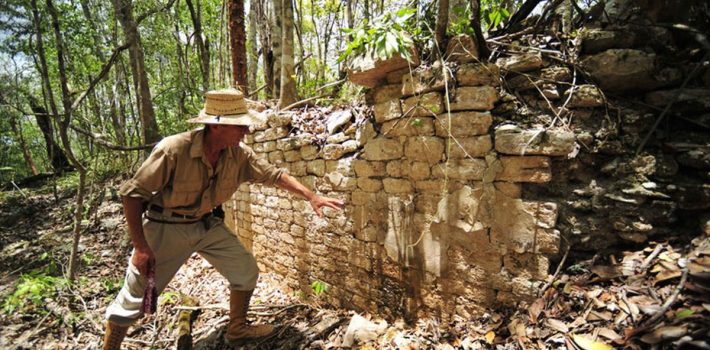
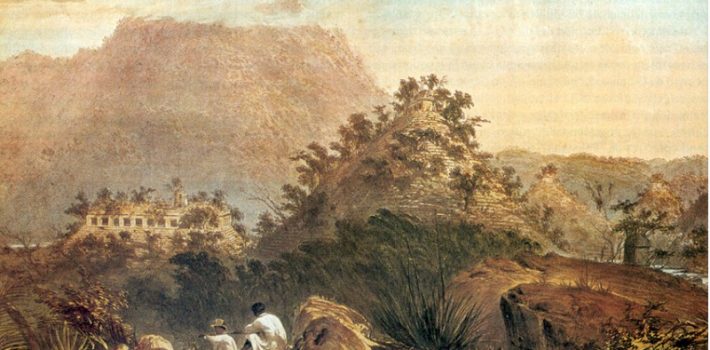
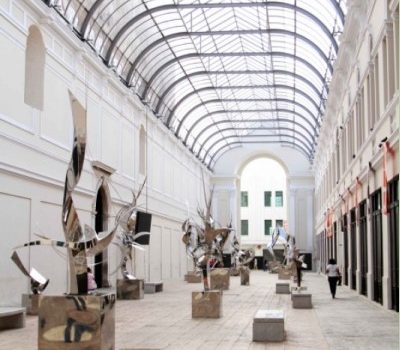
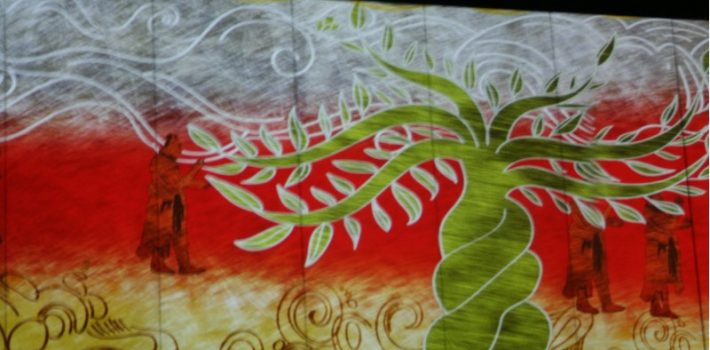

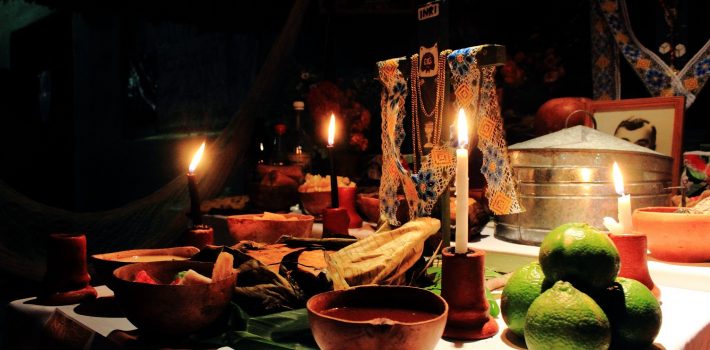
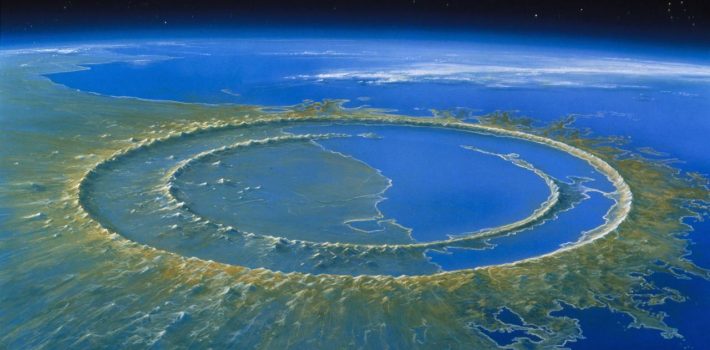
Recent Comments